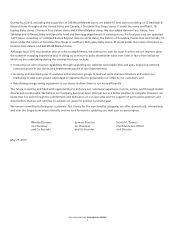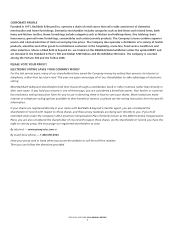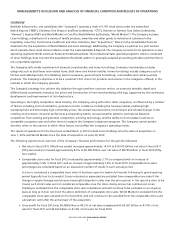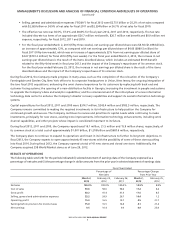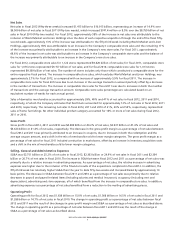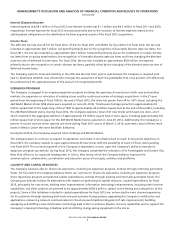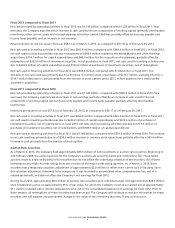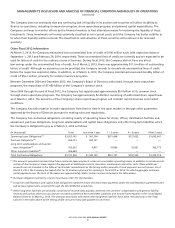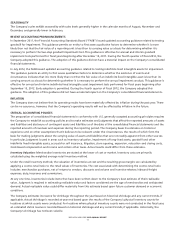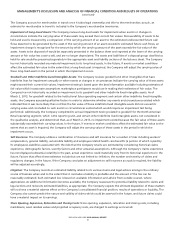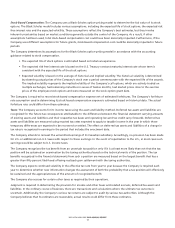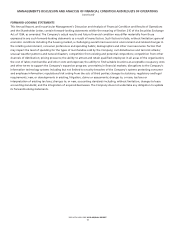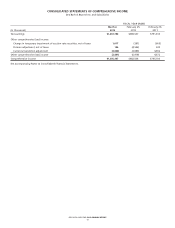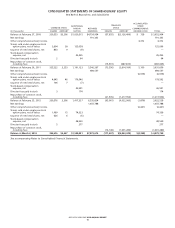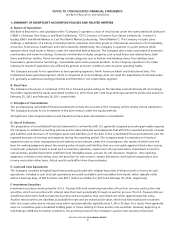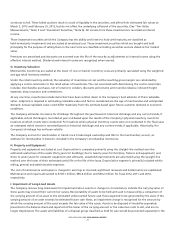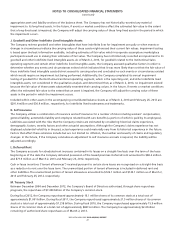Bed, Bath and Beyond 2012 Annual Report Download - page 15
Download and view the complete annual report
Please find page 15 of the 2012 Bed, Bath and Beyond annual report below. You can navigate through the pages in the report by either clicking on the pages listed below, or by using the keyword search tool below to find specific information within the annual report.Stock-Based Compensation: The Company uses a Black-Scholes option-pricing model to determine the fair value of its stock
options. The Black-Scholes model includes various assumptions, including the expected life of stock options, the expected risk
free interest rate and the expected volatility. These assumptions reflect the Company’s best estimates, but they involve
inherent uncertainties based on market conditions generally outside the control of the Company. As a result, if other
assumptions had been used, total stock-based compensation cost could have been materially impacted. Furthermore, if the
Company uses different assumptions for future grants, stock-based compensation cost could be materially impacted in future
periods.
The Company determines its assumptions for the Black-Scholes option-pricing model in accordance with the accounting
guidance related to stock compensation.
• The expected life of stock options is estimated based on historical experience.
• The expected risk free interest rate is based on the U.S. Treasury constant maturity interest rate whose term is
consistent with the expected life of the stock options.
• Expected volatility is based on the average of historical and implied volatility. The historical volatility is determined
by observing actual prices of the Company’s stock over a period commensurate with the expected life of the awards.
The implied volatility represents the implied volatility of the Company’s call options, which are actively traded on
multiple exchanges, had remaining maturities in excess of twelve months, had market prices close to the exercise
prices of the employee stock options and were measured on the stock option grant date.
The Company is required to record stock-based compensation expense net of estimated forfeitures. The Company’s forfeiture
rate assumption used in determining its stock-based compensation expense is estimated based on historical data. The actual
forfeiture rate could differ from these estimates.
Taxes: The Company accounts for its income taxes using the asset and liability method. Deferred tax assets and liabilities are
recognized for the future tax consequences attributable to the differences between the financial statement carrying amounts
of existing assets and liabilities and their respective tax bases and operating loss and tax credit carry-forwards. Deferred tax
assets and liabilities are measured using enacted tax rates expected to apply to taxable income in the year in which those
temporary differences are expected to be recovered or settled. The effect on deferred tax assets and liabilities of a change in
tax rates is recognized in earnings in the period that includes the enactment date.
The Company intends to reinvest the unremitted earnings of its Canadian subsidiary. Accordingly, no provision has been made
for U.S. or additional non-U.S. taxes with respect to these earnings. In the event of repatriation to the U.S., in most cases such
earnings would be subject to U.S. income taxes.
The Company recognizes the tax benefit from an uncertain tax position only if it is at least more likely than not that the tax
position will be sustained on examination by the taxing authorities based on the technical merits of the position. The tax
benefits recognized in the financial statements from such a position are measured based on the largest benefit that has a
greater than fifty percent likelihood of being realized upon settlement with the taxing authorities.
The Company expects continued volatility in the effective tax rate from year to year because the Company is required each
year to determine whether new information changes the assessment of both the probability that a tax position will effectively
be sustained and the appropriateness of the amount of recognized benefit.
The Company also accrues for certain other taxes as required by their operations.
Judgment is required in determining the provision for income and other taxes and related accruals, deferred tax assets and
liabilities. In the ordinary course of business, there are transactions and calculations where the ultimate tax outcome is
uncertain. Additionally, the Company’s various tax returns are subject to audit by various tax authorities. Although the
Company believes that its estimates are reasonable, actual results could differ from these estimates.
BED BATH & BEYOND 2012 ANNUAL REPORT
13


